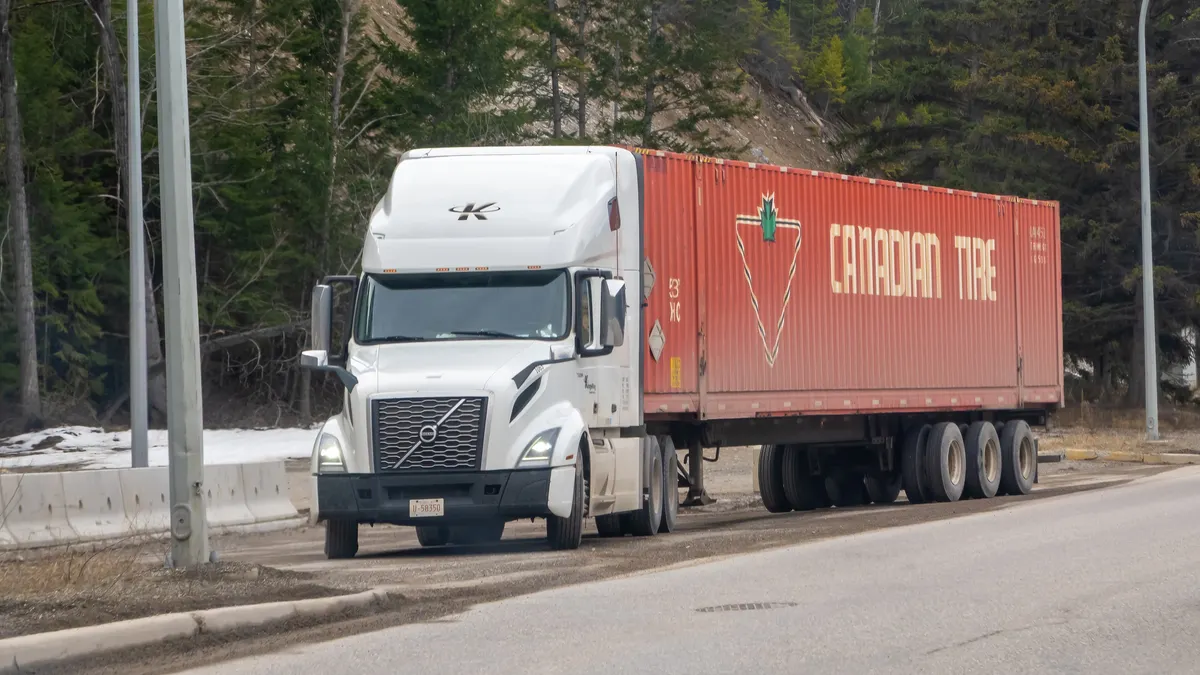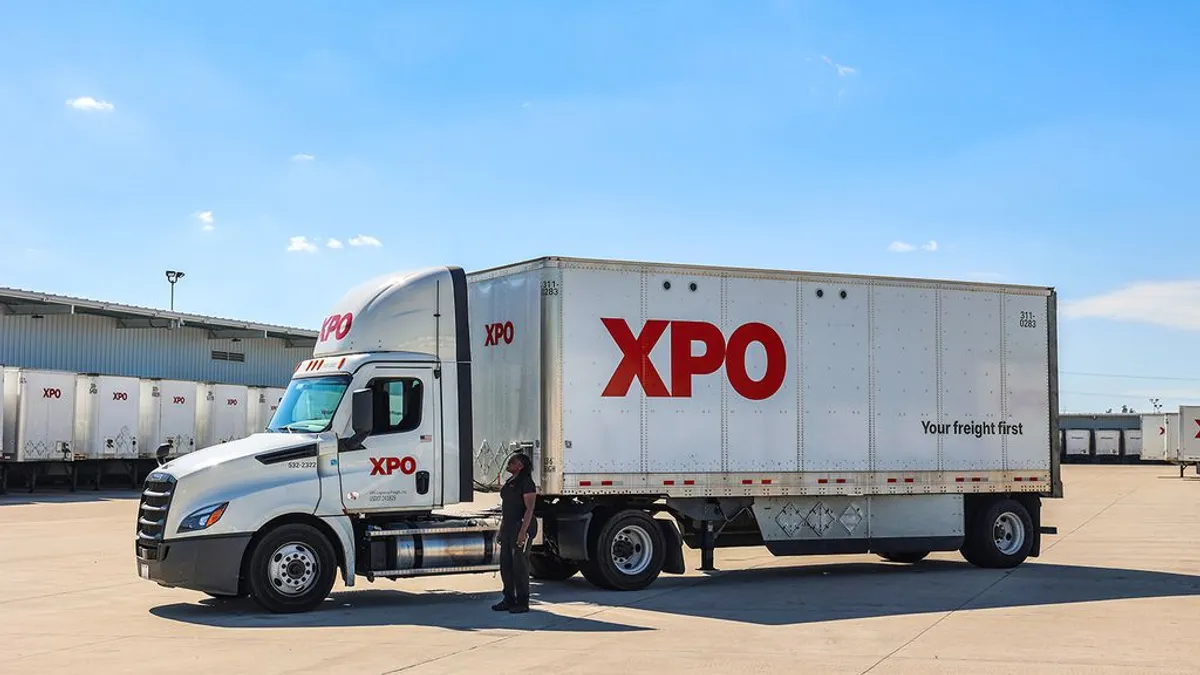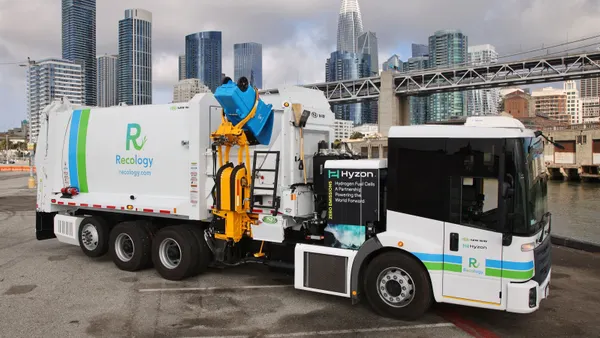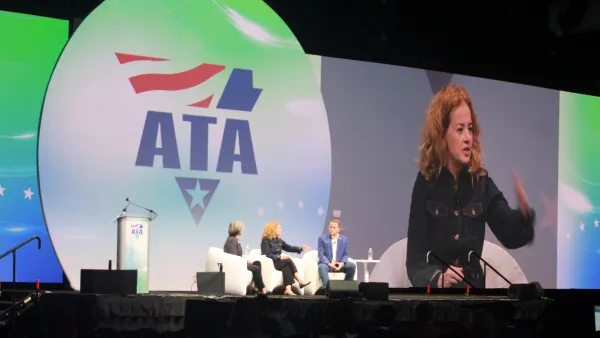SAN DIEGO — Trucking demand does not appear to be going anywhere anytime soon, Volvo Trucks North America President Peter Voorhoeve suggested Oct. 26 at the American Trucking Associations’ 2025 Management Conference & Exhibition.
He believes Q1 and Q2 2026 will not be that different from what they are now, exacerbating the three-year freight downturn. But “it's a cyclical business” that “will come back,” he said at a news conference highlighting the new VNL, which began series production last year, and the all-new VNR that will start production in February.
While Volvo leadership examines many indicators on the market, there’s a direct relationship between the cyclical nature of both the economy and the transport business, Voorhoeve told Trucking Dive. “The economy will grow again,” he said, “and then you will see transport coming.”
He noted the average age of a truck is around 6.6 to 6.8 years, nearing a critical period when higher maintenance costs prompt many fleets to replace the vehicles. As that figure nears 7 years, there’s a good business case for buying new.
The messaging comes as new truck forecasts have been adjusted downward. Many carriers are taking wait-and-see approaches, given changing U.S. tariff policies and looming 2027 emission regulations.
While Volvo Trucks North America produces 100% of its trucks in the U.S., the OEM does import parts, which increase costs, but the OEM has been carrying those costs, Voorhoeve said.
But Nov. 1 truck tariffs will not affect Volvo’s U.S. production, he said, suggesting competitors with production in Mexico may face more hurdles. The Teamsters have stated that multiple Volvo competitors produce most of their U.S. trucks south of the border.
Still, uncertainty persists, analysts note. And even though the Environmental Protection Agency has stated it plans to reconsider new 2027 greenhouse gas emissions standards for heavy-duty trucks, Volvo says that the looming policy change is still on the books.
“The only thing we know is that on the first January 2027, the emission regulations for NOx will change,” Voorhoeve said, referring to the current oxides of nitrogen standard of 0.20 grams per brake horsepower-hour for heavy-duty trucks. That restriction is slated to significantly drop to 0.035 grams, based on a years-old final rule.
In a statement to Trucking Dive on Tuesday, the EPA said it is currently reevaluating its Heavy-Duty Engine and Vehicle NOx rule from 2022 and plans to propose a rule in the spring of 2026.
“If finalized, the action will make major changes to the program requirements while maintaining the Model Year 2027 start of the standards, which can significantly reduce the cost of new heavy-duty vehicles, while still protecting human health and the environment, and avoiding regulatory distortions of the heavy-duty vehicle market,” the EPA said.












